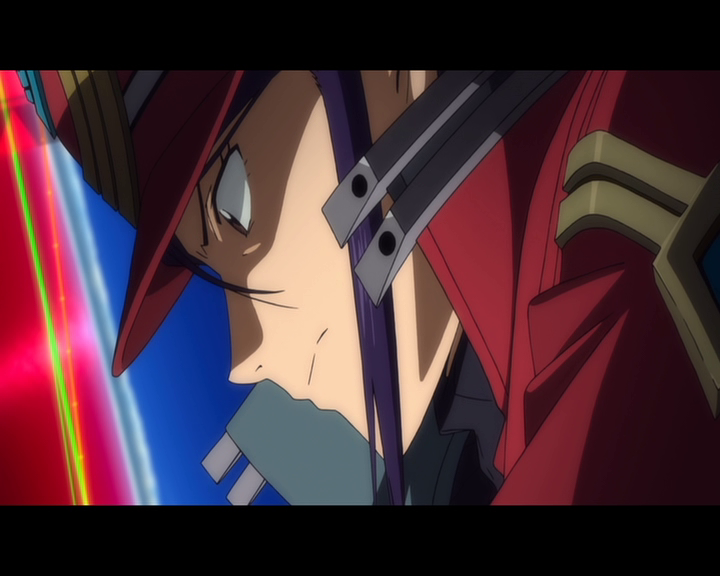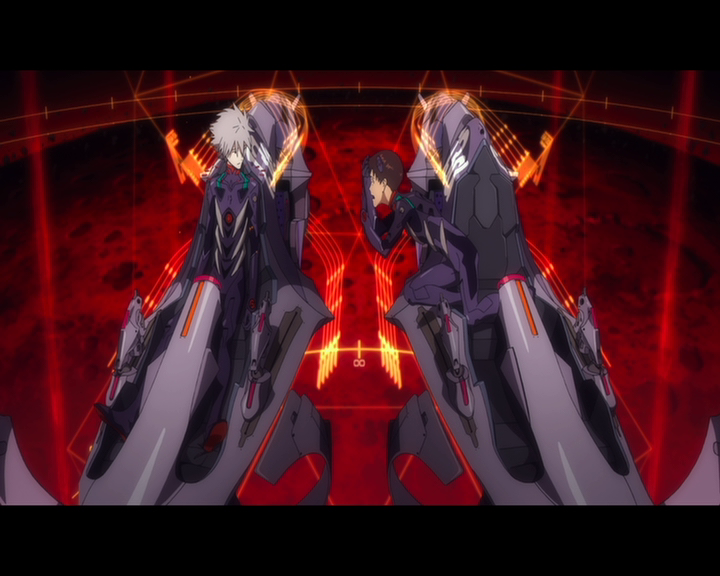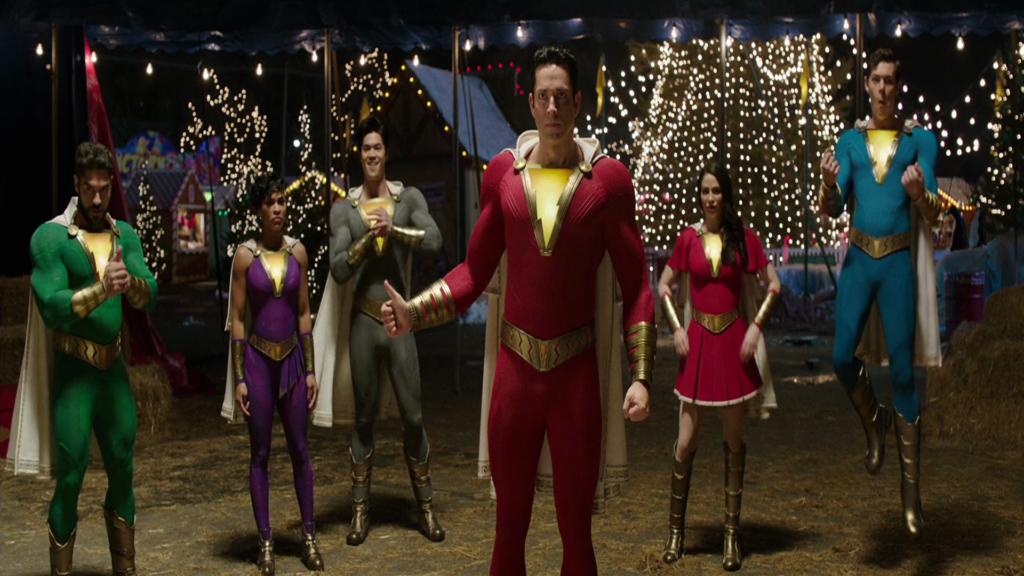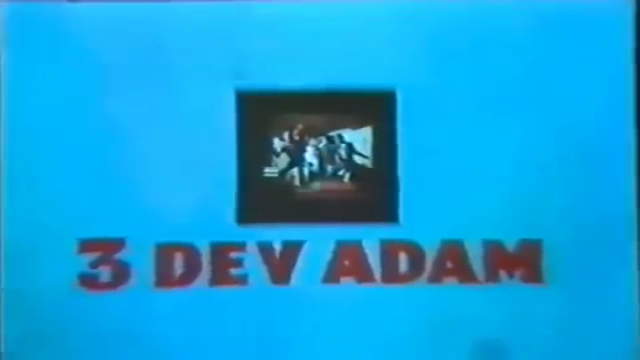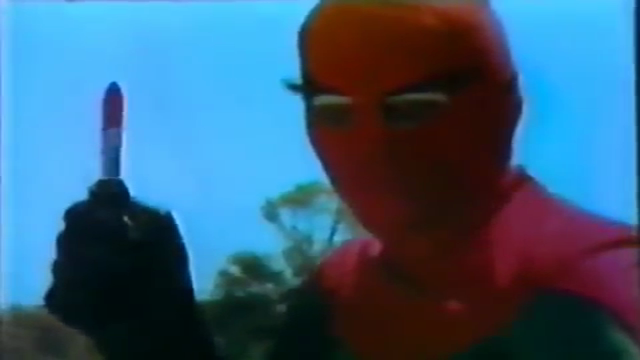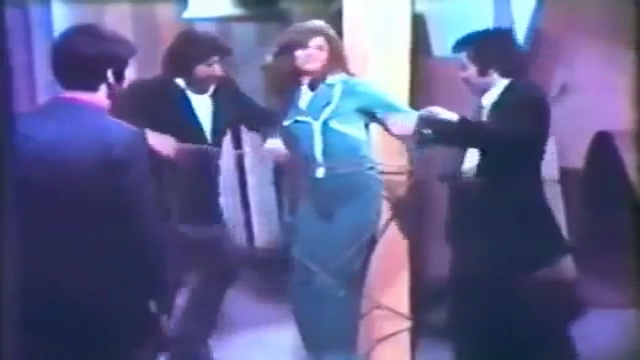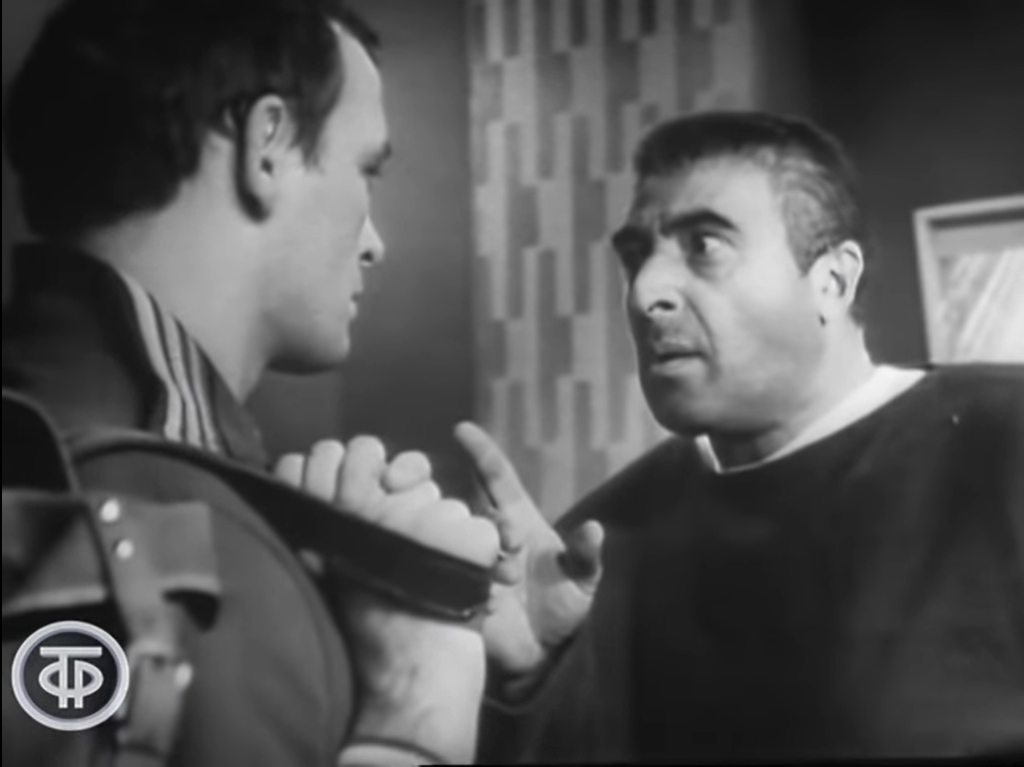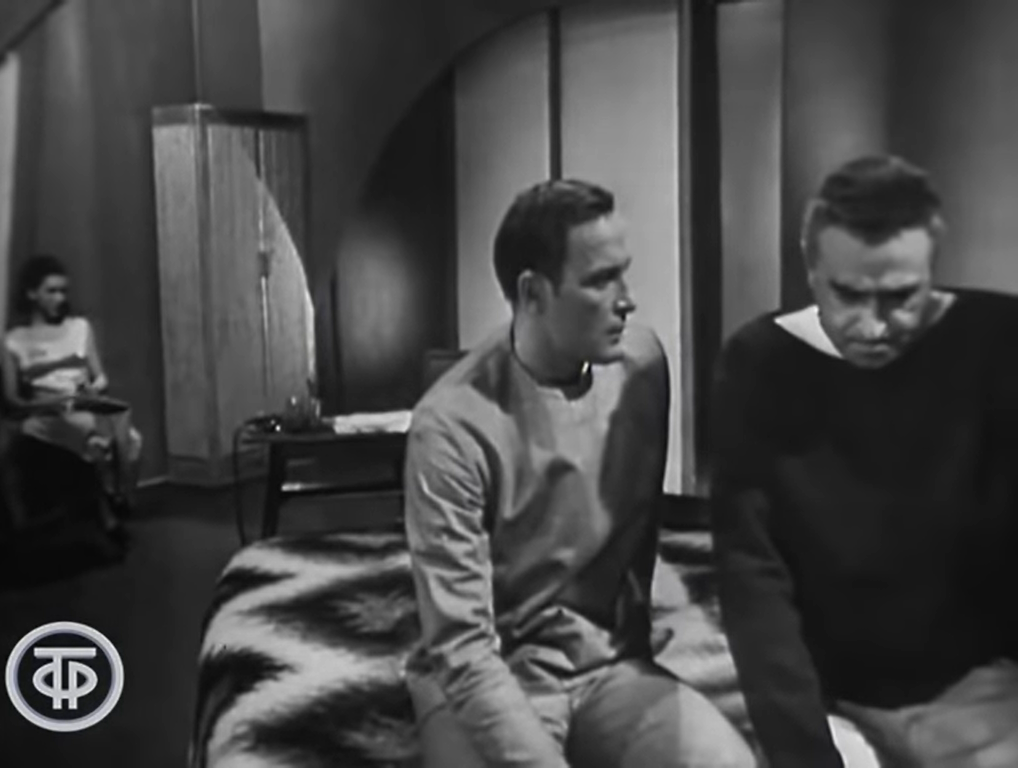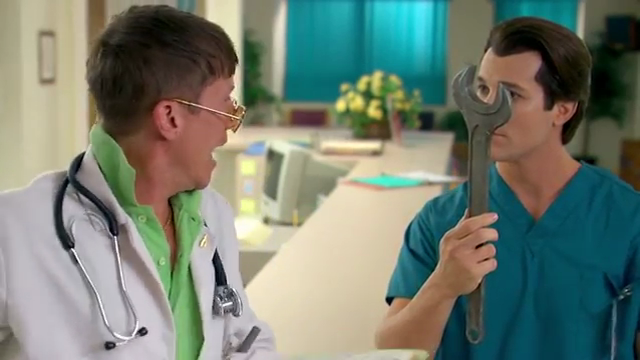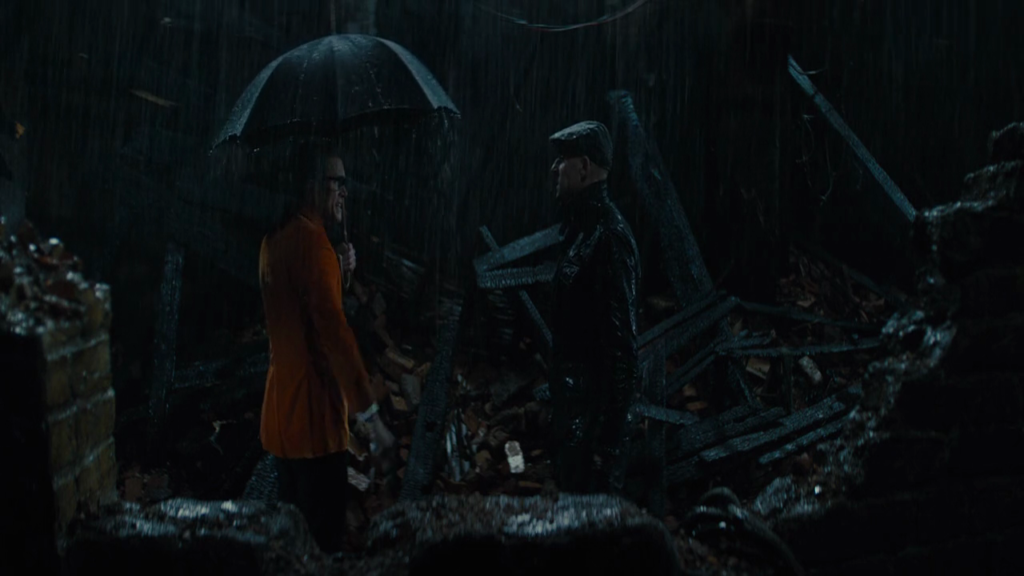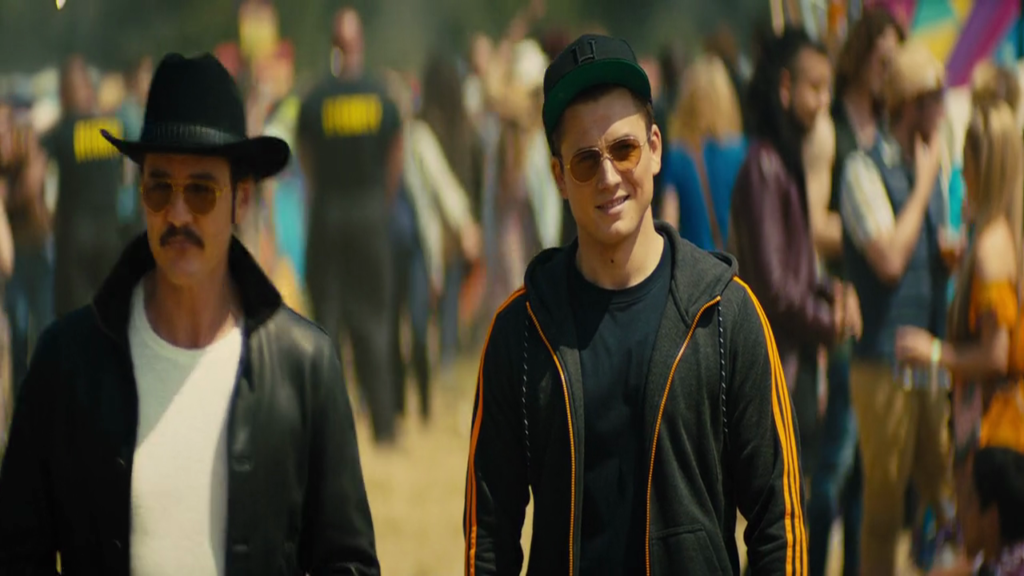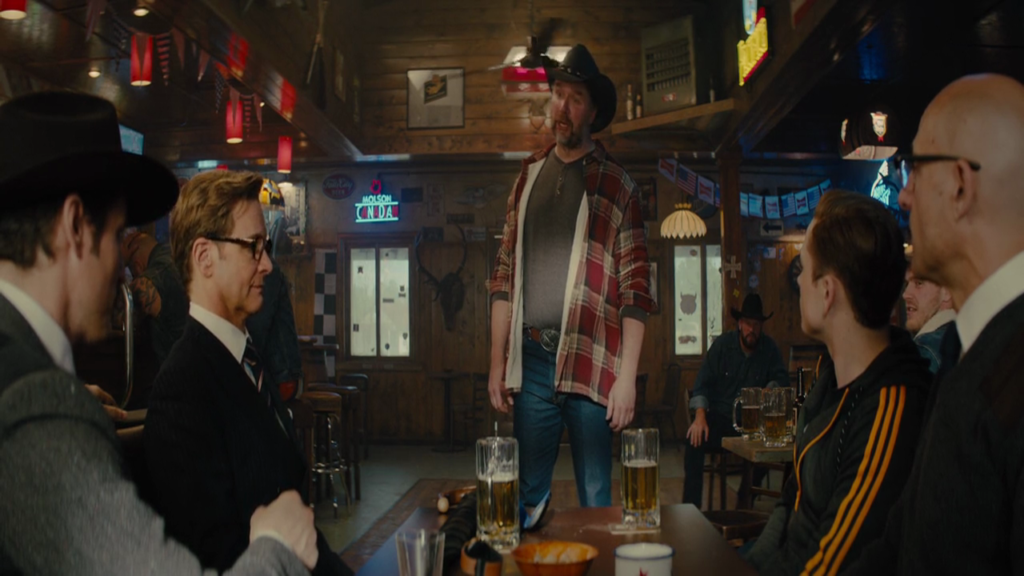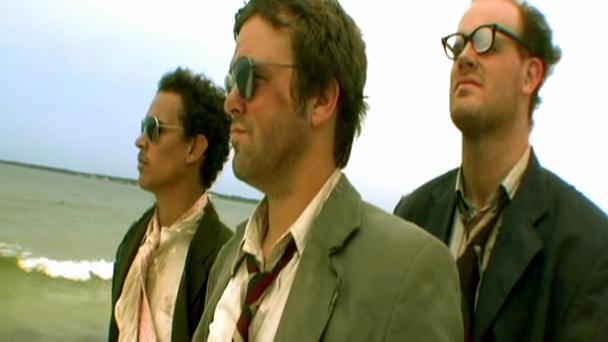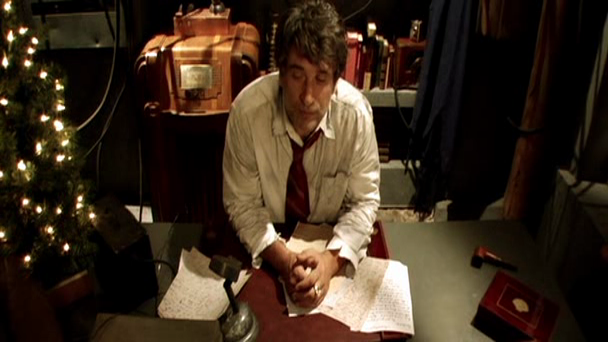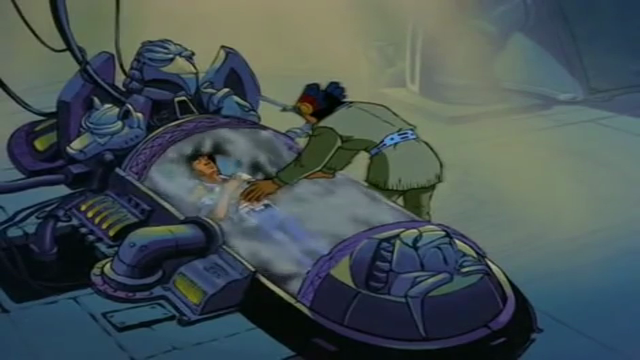-
#367 – Evangelion 3.0: You Can (Not) Redo
Evangelion 3.0: You Can (Not) Redo (2012)
Film review #367
Director: Hideaki Anno
SYNOPSIS: Shinji Ikari wakes up out of a coma to find he has been unconscious for fourteen years. In that time, the world has changed to a point that it is unrecognisable to him. The people he knew do not need him anymore, and his actions seem to have not mattered. As he sinks back into a state of depression, he finds a new friend; one which accepts him completely for who he is. However, fate has another twist in store for Shinji, as he is once again forced to play his part in the machinations of his Father, and the fate of humanity once again falls into his hands…
THOUGHTS/ANSLYSIS: Evangelion 3.0: You Can (Not) Redo is a 2012 film and the third in the Rebuild of Evangelion series, which remakes and retells the iconic Japanese animated TV series based around giant EVA robots piloted by a group of selected children. The film opens up where the previous one left off…well, except that it is fourteen years after the events of its climax. The film is very neatly separated into three acts, almost as If they were episodes of the TV series. The first act opens with Shinji Ikari waking up out of a coma to find out he has been asleep for fourteen years. In this time, it seems that everything has changed, with everyone he knew now working for WILLE, a new organisation dedicated to stopping NERV and the fourth impact, which will bring about the end of humanity. The ending of the second film saw Shinji finding a purpose and doing what he wanted in order to save Rei Ayanami, a fellow EVA pilot, and when Shinji wakes up at the beginning of this film, he finds that not only he didn’t save Rei after all, but he is no longer needed to pilot the EVA, leaving him without purpose. While the two previous films followed the story of the original series quite closely, this film opens up in a completely new world that has deviated from the source material, so viewers will empathise with Shinji’s position. The problem with this is that it essentially renders the ending of the previous film null and pointless. The ending was a powerful moment in that Shinji finally found his voice and purpose, but cancelling that out completely in the opening scenes in this film doesn’t sit quite right, and sets the film back quite a bit. While Shinji can do nothing, Misato, Asuka and the rest of the people Shinji knew go into battle in the EVAs and their new battleship in quite frankly is an amazing, hugely epic battle. The animation is an exemplary mix of 2D and 3D animation, there’s lots of variety in the action, and the soundtrack is grand. It does go on for quite a while, but it really is a spectacle that is extremely busy and full of shouting orders and military execution that again gives no space for Shinji to really do anything.
Shinji is kidnapped by his Father and told he must pilot a new EVA unit with a co-pilot, another young boy named Kaworu. In his hopeless state of mind, Shinji finds the one person who offers to help and support him unconditionally. After the high stakes, epic battle that consumed the first act, all that energy dissipates to focus on the psychological troubles of Shinji which will not be unfamiliar to fans of the series. The trouble is after the first act and its bombastic battle it struggles to find a footing and feels like a let-down in comparison. There’s a lot of re-visiting of similar themes as Shinji and Kaworu spend time with each other, as well as Shinji’s re-establishing contact with Rei. Again, all these things feel like they were addressed by the end of the second film, and they are being brought up again without adding anything new to the narrative. There’s some effort to make Shinji’s motivations more clear, but this act is very sparse on content.
The Third act sees Shinji and Kaworu enacting Gendo’s (Shinji’s Father) wish to begin the fourth impact and to initiate the next step of human evolution. The tempo picks up again and there’s a balance between the themes and energies of the first two acts. The story however starts to get really complicated, and difficult to follow: even though this is in typical Evangelion style, it still feels like it is throwing in a lot of exposition and elements that are given little space to be considered by the viewer. The trouble is that the first act demonstrated such a powerful action sequence that the climax just can’t compare with it. It tries, but there’s a complete mismatch. The climax is still filled with drama and action, but it’s a middle ground between the first two acts, and it can’t synthesise the two to move beyond them sadly.
Overall, Evangelion 3.0 offers a dramatic departure and something different for the series. Whereas the first two films stuck to the pace and structure of the original series, this film throws the viewer, along with the main character into a completely new world, leaving us in the same position as Shinji in order to empathise with him. I have to emphasise again that the way the film immediately renders the payoff of the previous film null and void feels like a bad move, and sends the film back to square one with the characters. The opening act does a good job of balancing the action with the impact of the situation on Shinji’s character, offering the viewer the chance of empathise with him, but the film does feel like it peaks at the end of the first act, and never quite exceeds what it achieves there. Nevertheless, the animation quality (again, mostly in the first act) is spectacular, the music is epic, and it offers a sense of scale and drama (thanks to its large budget) that the series did not do. The story struggles to find its footing throughout in this new direction, and dims the energy of the film series, but the areas it does excel in balance out the weaknesses which leave the film a mixed bag. More should probably be expected of such a highly regarded and renowned series, but it is not completely a write-off, and sets up a final film which hopefully can provide a fitting ending.
-
#366 – Pulgasari (1985)
Pulgasari (1985)
Film review #366
Director: Shin-Sang-Ok
SYNOPSIS: A small village is by invaders who try to force the blacksmith to make weapons for them. When he refuses, he is sent to prison without food until he changes his mind. In his dying moments, he creates a small figure that he vows will destroy the invaders. When the figure comes alive in front of Ami, the blacksmith’s daughter, she realises the creature grows bigger with the more iron it eats, and the villagers begin feeding the creature their iron in order to fight the imperial invaders…
THOUGHTS/ANALYSIS: Pulgasari is a 1985 monster film and the first film I have reviewed from North Korea. The story behind the film is just as interesting as the film itself. The director, Shin Sang-ok, was kidnapped with his wife by North Korea for the intention of producing films such as Pulgasari for the government. Kim Jong-il, the leader of North Korea, was apparently a huge fan of the Godzilla films, and wanted to create his own version, thus why he is listed as the executive producer on this film. For around ten years Shin Sang-ok and his wife (an actress in her own right) were forced to make films for the government before eventually escaping when they were visiting a film festival in Austria and fleeing their North Korean minders. Pulgasari was the last film he directed before he made this escape.This whole story would probably make an interesting film in and of itself…
With regards to Pulgasari itself, the film opens up in a remote village in the past. A young man named Inde wants to leave the village to join a group of rebels/bandits living in the mountains, but Ami, a woman in the village who he is due to wed, does not want him to go. This drama is interrupted as an army enters the town to commission the blacksmith, Ami’s Father, to create weapons for their army. They take all of the iron items from the villagers to use in creating these weapons, which leads the blacksmith to refuse to help them. They respond by locking him up without food until he changes his mind. Just before he dies of starvation, the blacksmith creates a small figurine of the mythical monster Pulgasari which he puts his soul into, with the aim of protecting the village. When Ami gets the figure, she accidentally drips some of her blood onto it and causes it to come alive and start eating anything made of iron. As Pulgasari grows with everything he eats, the villagers and the rebels in the mountains rally behind the indestructible Pulgasari to drive away the invaders. The story as a whole is fairly simple, with a number of battles between the villagers and the imperial army, with a number of schemes by the King to stop Pulgasari as he relentlessly advances towards him. I suppose it doesn’t need to be much more complicated than a giant monster smashing stuff, and in that respect the film does its job fairly well. Some of the scenes centred around the other characters can dragon a little too long, and there are large gaps in between when Pulgasari makes an appearance which become rather dull. Nevertheless, Ami is a decent (and rare) female lead, and the setting is fairly well established.
The film is set in the past, and feels like it relies a lot on the history of Korea during that era. The villains are clearly meant to be Japanese, which is a typical portrayal of the country given it’s past in occupying Korea, and North Korea’s particular resentment of them. As you might expect, the film not so subtly fulfils the propaganda of the North Korean narrative, with the common workers banding together to overthrow the invading, imperial rule. In the end, Pulgasari becomes too big and continues to eat all the iron even after the invaders are gone. This leads to Ami sacrificing herself to stop Pulgasari. This is perhaps a reference to the revolution in North Korea leading to the creation of a monster that will bring about their destruction was a slight dig by the captive director at the regime that was holding him hostage, but it’s difficult to say for sure.
I was expecting a rather barebones film out of North Korea, and it more or less met those expectations. The production values and special effects aren’t much improved on the Godzilla films made thirty years prior. Nevertheless, just as those films still hold up well, some of the scenes in this film look fairly decent, particularly watching Pulgasari destroying buildings. The battle scenes as well feature a host of extras to give the feel of armies clashing. Some of the effects though, are pretty bad, such as when Pulgasari is small, you can clearly tell it is a hand puppet. The body suit of Pulgasari is again pretty decent, and has some moving parts and facial animations to make it more convincing. The soundtrack consists of a single synthesiser being played in more dramatic scenes, and is barely worth mentioning, but overall the film ended up being more well made than I was expecting. Pulgasari doesn’t offer anything new or exciting to the genre, and it loses some of it’s significance outside of it’s home country, but it is a rare and interesting example of cinema from a place you wouldn’t normally see.
-
#365 – Shazam! (2019)
Shazam! (2019)
Film review #365
Director: David F. Sandberg
SYNOPSIS: Billy Batson is a foster child who is constantly running away and trying to find his real mum. When Thaddeus Sivana enters a hidden realm looking to take a Wizard’s ancient powers for himself, and steals the powers of the seven deadly sins to unleash them on Earth, the wizard summons Billy to be his champion and take his powers to stop Sivana from unleashing hell on Earth.
THOUGHTS/ANALYSIS: Shazam! is a 2019 superhero film based on the comic book character, and is also part of the DC cinematic universe of films. The film starts off showing a young boy named Thaddeus Sivana, who is transported to the Rocky of Eternity, a sacred temple where he is tested by a wizard to see if he is worthy of inheriting his magic powers. Sivana fails to be pure of heart, and is sent away. In the present day, Sivana is still desperately trying to return to that temple, and take the powers for his own. We are also introduced to Billy Batson, a fourteen-year old boy who is constantly running away from foster homes as he tries to find his Mother. He is moved to a new foster home where he is introduced to Freddy Freeman, another foster child. When Billy intervenes to stop some bullies attacking Freddy, he escapes on the subway, where he is transported to the Rock of Eternity. There, Billy learns that Sivana has unleashed the seven deadly sins, and Billy is the last hope to stop them. The wizard transfers his powers to Billy, and tells him he can access them by uttering his name: Shazam. The film’s premise is pretty simple: it’s a classic clash of good vs. evil, with some human drama in between. There’s a good balance of these different elements, and everything feels like it adds something to the plot.
With Billy able to transform into Shazam, he has to learn how to use his new powers, as well as to work out what those powers actually are. He and Freddy try and test out a number of powers, and we get a sense of Shazam being an incredibly versatile hero, but ultimately he still has the naivety and worldview of a fourteen year old boy. Shazam has many of the abilities (and appearance) of superman, but has none of the maturity or legacy that Superman has, and is thrust into this state with no information or warning. Billy has to work out what he is supposed to do with these powers and what their possibilities are, and a good chunk of the film is spent exploring this. The film goes through some fairly predictable scenarios that while not wholly original, are still lots of fun, and deliver a light-hearted entertainment with some good laughs. It does a similar thing to the well remembered film Big, and includes a sly reference to it in one scene, which again is pretty fun. Shazam! really harks back to the classic comic book heroes: the battle of good versus evil without being too concerned about building complex and conflicted characters. However, this type of superhero doesn’t really fit in to what we recognise in contemporary comic book heroes, and so Billy’s naivety and sense of being lost (reflected in his own personal story with regards to finding his mother) is in line with this and keeps a consistent tone throughout. There’s also the issue of Billy’s alter ego having no real superhero name, but that’s more of an awkward reference that his name is technically Captain Marvel and Marvel Comics now owns that trademark for their own Captain Marvel, and so there’s always been this issue around his name (typically he is just referred to as Shazam). Overall though, the focus is on a light-hearted, fun superhero film that keeps things simple and humourous, while trying to find a place for this kind of superhero in a world that has somewhat moved on from this conception of them (especially in the DC comics universe).
Shazam! is primarily based on the 2011-2012 comic reboot of the character, and it seems to follow it pretty closely, with the setting and characters being fairly similar to those in the comics. There is however, some other callbacks to the larger legacy, including the ambiguity surrounding Shazam’s name. The black and white movie serial based on the character is one of my favourite of the superhero serials of the time, and while the two characters are rather different, that transformation of Billy into Shazam/Captain Marvel is still the same, with the cool image of the bolt of lightning striking him, and Shazam emerging from a cloud of smoke. The acting partnership of Billy/Shazam is great, and their transformation really gives the impression that they are the same person, just with a different body (compared to the movie serial, where they were portrayed as different people). The supporting cast also do a good job and add some variety, but given that the end of the film does dedicate a decent amount of time to these characters, I feel like they weren’t set up completely to justify the time spent on them at the climax.
As much as I did enjoy this film, there are some glaring problems. Firstly, as mentioned, this is a classic good vs. evil film, and as such the villain doesn’t stand out too much. He exists mostly as a character for Billy/Shazam to test his limits against and to see his own place in the world. Another problem is that the resolution at the end of the film just isn’t set up very well: when Billy finds his biological mother and he realises that she intentionally abandoned him, he suddenly decides that the foster home is now his “real family”, but the film does no work in facilitating this u-turn. There’s plenty of development between Billy and Freddy (although this is undone constantly by Freddy’s interventions telling Billy what a superhero should be, rather than Billy’s childish stunts), but none between Billy and the foster family as a whole, and we never see him settling into this new home or changing his attitude to anyone there. The film really only needed a scene or two to show Billy’s changing attitude, but as it stands the change just seems to come from nowhere. The last major problem is that the finale sees Billy giving his fellow foster kids the same powers he has, and they work as a family to defeat the “family” of the seven deadly sins. This actually is in keeping with the comic book, but it does come out of nowhere, again due to the whole foster family story being underdeveloped. On top of this, it does dilute the final fight by splitting the action between Shazam and everyone else, thus we never get to see Billy’s triumph and rewarding moment of glory as it’s shared with these other characters that show up and share the spotlight. I think all of these problems don’t really hamper the enjoyability of the film, and could have easily been addressed with a tighter script and the addition of a few scenes.
The light-hearted and humourous angle of Shazam! lends itself to being more a family-oriented film, and it revels in a bright colour palette and expressive acting and visuals compared to the dark and austere palette often associated with films based on DC comics. The film was directed by David F. Sandberg, who directed the 2015 short film Kung Fury, and that same style is definitely on show again here. However, there’s some use of adult language, and the demons embodying the seven sins are pretty gruesome looking. Also the scene with the demons in the boardroom meeting I imagine would be pretty disturbing for kids, even though there’s no gore involved. Overall, Shazam! is a fun adventure with plenty of laughs and action. It harks back to the classic conception of a superhero, as well as thinking about where such conceptions belong in contemporary settings, where the dividing lines of good versus evil are not so neatly drawn. While it sometimes does not offer much new, it still executes it in a colourful, fun way that will be entertaining so you won’t care that much. There are some elements of the story that are underdeveloped and thus dilute some of the payoffs at the end of the film, but these don’t stop the film being entertaining and worthwhile viewing.
-
#364 – 3 Giant Men (1973)
3 Giant Men (1973)
Film review #364
Director: T. Fikret Uçak
SYNOPSIS: A smuggling gang led by Spider-man is stealing precious artefacts in Turkey and selling them for huge profits in the U.S. The Turkish authorities call in Captain America and Mexican wrestler Santo in order to defeat Spider-man and stop the smuggling ring.
THOUGHTS/ANALYSIS: 3 Giant Men (3 Dev Adam) is a 1973 Turkish superhero film. The film centres around Captain America and Mexican wrestler Santo trying to stop a smuggling ring headed by Spider-man (or “the Spider” as he is called in the film). It may strike you from this summary that this is a completely bizarre concept for a film, and makes very little sense considering the characters themselves, but we’ll get on to that later. First, the story begins with a woman being caught by Spider-man’s gang and being killed by having a boat’s propeller reversed into her face (offscreen anyway, signified by the spraying of what looks like tomato ketchup onto the legs of a witness). With this smuggling gang stealing and killing all over the place, the Turkish authorities call in Captain America and Mexican wrestler Santo in order to stop the gang. The story unfolds without any surprising or complex elements; the premise is laid out at the beginning and it’s followed through until the end without interruption. The story reminds me of classic movie serials, which consisted in a lot of this constant back and forth of fight scenes, car chases, and investigating.
Okay let’s talk about the characters: first, Turkish cinema around this time is infamous for using characters and footage from other properties without permission, and I’m pretty sure this is another example of that. When the police chief first meets Captain America, he remarks how good his Turkish is for an American…except it is plain to see that he is not American, he is played by a Turkish actor, who consequentially does not resemble Captain America in any way. I wonder how much Turkish audiences in 1973 would be familiar with American superheroes, and since it is probably very little, I suppose they could get away with just doing whatever they wanted with the characters. The Mexican wrestler Santo is an original character for the film, and puts on his wrestler mask and cape whenever he needs to fight some bad guys. At one point he is seen wearing a native American jacket, which is a bit odd if he is Mexican, and I wonder if the filmmakers were just conflating the two out of laziness and/or ignorance. Spider-man being the villain is probably the oddest character of the film, as he is one of the most innocent and naive of any superhero. Here, however, he is portrayed as a ruthless murder, who stabs multiple people, tortures them and at one point sends some rats down a ridiculous contraption to eat someone’s eyes out. Perhaps the most bizarre part of his character is when Captain America is explaining that Spider-man cannot stand people who dress up in costumes (such as Captain America), and he will automatically attack them on sight. How does that work? Is he jealous that his ill-fitting suit is upstaged by other costumes? I assume it’s that. Either way, “The Spider” is a ruthless villain with absolutely no connection to the original character, Also his huge eyebrows are a major distraction…
I can’t quite figure out who this film is meant to be for: the superhero characters might make you think it is a more family-oriented, as the original characters would have been, but the all the brutal deaths and torture (even though it is mostly off-screen) is definitely not family viewing. Couple that with the semi-nudity and stripper scenes and you’re definitely looking at a film intended for adults. The film as you might expect is a very low budget affair, with cheap sets, costumes and props being the norm throughout. Again, it reminds me of the classic movie serials, which used a limited amount of sets and props to keep costs low. There are some surprisingly good points though: Captain America’s suit looks pretty well done (in contrast to Spider-man’s green and red suit, which as mentioned does not fit well), and the fight scenes are quite decently choreographed, although clumsily edited in parts. At the end, the fight between Captain America and Spider-man gets incredibly ridiculous, with Captain America killing off Spider-man in a number of silly ways, only for him to reappear around a corner, and the fight carry on somewhere else. I assume they are all body doubles, but with this film it’s hard to tell what logic it subscribes to from one scene to the next. This film is ridiculous: it’s portrayal of it’s characters is completely at odds with the source material, the story is fairly basic, and is filled with odd scenes that make no sense (what was the deal with the puppet scene?). The film also crams in some raunchy scenes and gory violence that makes it feel like the film is just throwing all sorts into the picture without any consideration for a consistent tone. In the end though, you’re never going to take this film that seriously, and it’s worth a watch just to see how bad it is, and you’ll certainly get a laugh out of how cheap and silly it all is.
-
#363 – Solaris (1968)
Solaris (1968)
Film review #363
Directors: Boris Nirenburg, Lidya Ishimbayeva
SYNOPSIS: Dr. Chris Kelvin has arrived on a space station orbiting the planet Solaris. When he arrives, he finds that his colleague is dead, and the two remaining crew are acting strange. Things get even stranger when his wife, who died ten years ago, seemingly appears on the station with no memory of what happened to her. He learns that people important to each of the crew appear to them, and this is somehow connected to the planet Solaris below them. Chris and the other crew must try to determine how these people have come to be on the station, and indeed if they are real…
THOUGHTS/ANALYSIS: Solaris is a 1968 TV film based on the novel of the same name. It is the first adaptation of the book, but the least well known, having been overshadowed by the 1972 Tarkovsky version, generally considered to be a masterpiece of cinema, and to a lesser extent the 2002 version, which saw widespread release. The film opens up with Chris Kelvin, an astronaut and scientist, docking his shuttle with the space station orbiting the planet Solaris. When he arrives, he finds a peculiar set of circumstances, with his old friend and colleague dead having apparently committed suicide, and the two remaining crewmembers being extremely vague as to what is happening on the station. The film’s plot unfolds slowly, with the mystery being slowly unravelled while new complications are constantly added. It is rather similar to the other two films versions, so I will assume it follows the plot of the novel with some accuracy. It’s slow-paced, but it fits the story well, since it gives the viewer space to reflect on the themes that the film is exploring.
Upon finding his wife, who died ten years ago, seemingly alive and well on the station, he realises that each crewmember has had someone personal appear to them. They suspect it has something to do with Solaris attempting to communicate with them, and somehow reaching into each of their subconscious’ and materialising a person within. This is one of the primary themes of the film, and the means of communicating with an entity or being that is completely unlike anything that could be encountered on Earth. It is explained decently, and explored primarily through Chris’ relationship with Harrie, or the facsimile that has been created, which leads to the distinction between the real and fake being increasingly blurred. It doesn’t have the style and depth of the Tarkovsky version, but this no-frills version still gets its message across. A lot of the film does focus on Chris and Harrie, and it seems like a lot of the science-fiction emphasis is sidelined in favour of the film being more of a drama. We never get to see the people ‘created’ for the other crewmembers or get any clue to who they are, so that leaves an odd mystery that will never be solved (in this version anyway). This further reinforces the main relationship between Chris and Harrie, again emphasising their drama more than the larger concepts of the film.
Even though this version doesn’t have the budget or vision of the Tarkovsky version, it still gets the story across well. Instead of elaborate sets and design, we see a rather sparse looking space station which instead emphasises a feeling of isolation, and gives the film a more horror-vibe at times. This is not a bad adaptation by any means: it delivers the story well, explains what’s going on clearly most of the time (there are some points, particularly near the end, that it gets a bit confusing), and explores its themes with a decent depth. However, given the 1972 Tarkovsky version is such a stellar adaptation and work of cinema, there is really not much value in watching this version, as everything in it is done so much better there. Overall, a decent adaptation, but completely eclipsed by its successor.
-
#362 – RoboDoc (2008)
RoboDoc (2008)
Film review #362
Director: Stephen Maddocks
SYNOPSIS: A hospital is being constantly plagued by lawsuits from a greedy ambulance-chasing attorney. With another doctor quitting and the hospital fast running out of money, Dr. Roskin arranges for a new doctor to be sent, but doesn’t expect R.I.P. Healthcare to send a robot doctor, who is seemingly able to carry out medical duties without ever making a mistake. This causes problems for Jake Gorman, the attorney who is making money off all the malpractice cases, and working with Dr. Callaby, another doctor at the hospital who is in league with Gorman, the two try to find a way to stop “RoboDoc” before their money-making scheme is ruined…
THOUGHTS/ANALYSIS: RoboDoc is a 2008 sci-fi comedy film that somewhat parodies the RoboCop films, as the name implies. The film starts out introducing Jake Gorman, an ambulance chasing attorney who has made himself rich by suing doctors for malpractice. His constant lawsuits are pushing the North Mercy (or “No Mercy”) hospital to its limits, with doctors continually quitting and having their lives ruined. The opening of the film consists of a variety of gags and satirical looks at the U.S. healthcare system: from the ambulance-chasing attorneys, the lack of insurance for patients, and the ambulance driver adorning a racesuit, there’s a decent amount of content to get into. RoboDoc was written by two M.D.’s and so obviously they have the necessary experience to write about the setting of the film. I think there was definite potential in the outset to make this film offer a more thorough critique of the healthcare system through a comedic lens, but the film takes it in a completely different route and goes for just another raunchy comedy like so many we’ve seen before. Even in this direction, it needs to push some boundaries in order to be effective, but again it just doesn’t do enough to make it stand out.
After another such incident of a doctor quitting over a lawsuit, Dr. Roskin, the chief of medicine arranges the R.I.P. Healthcare company (who fund the hospital) to send another doctor, which they do, in the form of MD-63, a robotic humanoid doctor who is appointed to the hospital. While Dr. Roskin, a technophile, is reluctant to let a robot do a doctor’s job, he is slowly convinced when he sees that “RoboDoc”, as he is nicknamed, is able to complete any form of care or surgery without mistakes, and thus making him impossible to get sued. This is the core plot of the film, with RoboDoc having to earn the trust of his fellow staff, as well as learn about compassion and the elements of care that go beyond his programming. These are all story elements that have been done to death, and so there are no real surprises here. The character of RoboDoc is also essentially a carbon copy of Data from Star Trek: The Next Generation; right down to the look and voice, which is a recognisable character, but again fails to bring any originality to the RoboDoc role, and doesn’t even satirise it. The actor playing RoboDoc does do a good Data impression though. The character of Attorney Jake Gorman also is well played, and his over-dramatic performances bring some life to the scenes he is in. The rest of the cast are pretty forgettable (apart from the few scenes with the character played by Michael Wimslow from Police Academy), and don’t have much significance in the story. There are the starts of some sub-plots initiated by these characters, but they never really go anywhere, making their roles rather muddled.
RoboDoc is not a high budget film, and has to make do with a fairly limited range of effects. These effects are not particularly convincing, and combined with the uninspiring camera work and wooden acting from some of the actors, you will struggle to take it seriously. There are some positives as I have mentioned, and there are some more obscure references and satirical swipes that are more rewarding than the cheap innuendo jokes. The comedy on the whole does stick mostly to that juvenile, raunchy humour but offers nothing particularly new or memorable. Nevertheless, the film does garner a decent amount of laughs, and so as a comedy film it can’t be said to be a complete failure. RoboDoc is an uninspiring mess for the most part, but there are a few good performances and jokes that make this entertaining enough to watch if you’re not paying too much attention to some of the weaker characters and scattered story that often branches into meaningless dead ends.
-
#361 – Kingsman: The Golden Circle (2017)
Kingsman: The Golden Circle (2017)
Film review #361
Director: Matthew Vaughn
SYNOPSIS: When an attack on the secret agency Kingsman leaves the entire organisation in ruins and agent Galahad (Eggsy) and Merlin as the only survivors, they enact the doomsday protocol and head out to Kentucky to seek out assistance. They discover the Statesmen, a secret agency like their own, and the two must join forces to stop a mysterious organisation known as the “Golden Circle”, which is holding the world hostage by infecting drugs with a disease that can only be cured with the antidote being held by them…
THOUGHTS/ANALYSIS: Kingsman: The Golden Circle is a 2017 spy film and the sequel to the 2014 Kingsman film. The film starts off re-introducing Eggsy, the protagonist of the first film, and throwing him straight into an action sequence involving a high speed fight scene through the streets of London. It is a strong start that delivers precisely what you would expect from the film, as well as setting up the plot of the rest of the film. Everything changes however, when an attack targeting all of the Kingsman agents and assets leaves the entire agency wiped with Eggsy and intelligence asset Merlin as the only survivors. The film starts off re-introducing all the familiar concepts and characters, and to destroy them all in the blink of an eye certainly raises the stakes, but in doing so leaves no room for the agency to develop or for us to learn more about it. The plot on the whole is fairly straightforward and follows the typical structure of a spy film, but blends in some contemporary twists and comedy as did its predecessor to freshen up the genre. Unfortunately, the problems that the first film had still persists in the sequel: namely the inconsistency of tone and a wayward idea of what the film wants to be. Whether a serious spy film, a spoof of said films, or something else, it oscillates between these objectives and as a result feels a little disjointed. However, I think it improves on these issues compared to its predecessor, and the more over-the-top characters and story help reinforce the notion that the film is essentially a bit of not-so-serious entertainment.
After Kingsman is essentially wiped out, Merlin and Galahad/Eggsy learn that the agency’s “doomsday protocol” involves an American whiskey brewer in some way. They travel out to Kentucky where they find it is the home of the “Statesmen”: the U.S. equivalent of Kingsman, They agree to work together to find who was behind the attack; a group calling themselves the “Golden Circle.” But that’s not all. It turns out they also rescued Harry, the Kingsman agent who was shot and seemingly killed in the first film. However, he has lost his memory, and part of the film revolves around trying to reclaim it. There’s actually quite a lot of story going on in The Golden Circle, and it equates to a film with a runtime of nearly two and a half hours. I think this could have been reduced to make it run a bit more smoothly, as there a lot of elements that aren’t too necessary for the story. The new characters barely make any impact on the film, and as the film’s aim is to expand the world with this new agency, this failure is rather significant. On the other hand, there’s some good roles for the villains, and the bizarre role that Elton John has helps spice things up a little.
The Golden Circle retains the style of the original in terms of the action sequences, with the over-the-top and entertaining fights and chases that not only are in keeping with the original, but make them even more ambitious and over-the-top. The original had this element of a normal young man being brought into this extraordinary world and all the conflicts that arose from it, whereas this sequel starts off in the latter and never really comes down from it, creating a different feeling. In fact, the film builds on this and makes things even more over-the-top, introducing robot guards and dogs for the agents to fight. The effects however, are pretty consistent, and give the visuals a definite flair and impact that compliment the excessive and silly setups without them looking cheap or tacky. Overall, Kingsman: The Golden Circle keeps the mix of comedy and action that made the first film successful, while also doubling down on the more over-the-top elements. The returning characters and ideas are worked through more thoroughly quite well, but the new characters and elements are often overshadowed and play an ever-diminishing role. It still suffers from an inconsistent tone with regards to what it is aiming to be, but makes some strides to improve on it. It’s more silly action and entertainment, with an occasional and clever swipe at American culture that all adds up to another worthwhile bit of entertainment.
-
#360 – Kingsman: The Secret Service (2014)
Kingsman: The Secret Service (2014)
Film review #360
Director: Matthew Vaughn
SYNOPSIS: When Eggsy, a troubled young man ends up in trouble with the police and practically everyone else, he calls a number that was given to him when his Father died if he was ever in trouble. This leads to him being released and meeting Harry Hart, a seemingly refined and upper-class gentleman. However, it turns out Harry is part of a secret agency called the Kingsman, which Eggsy’s Father was also a part of, which fights crime and preserves world peace. Harry chooses Eggsy as a candidate to join the Kingsman, but he must undergo a series of trials to prove he is worthy, and meanwhile a rich tycoon is plotting a global catastrophe that the agency must try to stop before it is too late…
THOUGHTS/ANALYSIS: Kingsman: The Secret Service is a 2014 spy film about a secret service that independently preserves world peace. The film starts off (after a brief introduction scene set twenty years prior) introducing Eggsy, a young man who has had a troubled upbringing, having lost his Father at a young age and his Mother being in a relationship with a local mobster. Eggsy gets into trouble after stealing a car and ramming it into a police car to allow his friends to escape. When at the police station, he uses his one phone call to call a number on the back of a medal awarded to his Father when he died, which allowed him “one favour”. Eggsy walks out of the police station and is approached by Harry Hart, who got him released, and Eggsy learns that he is part of a secret service, like his Father, which helps to preserve world peace. Following the death of one of their agents, Harry nominates Eggsy as a candidate to replace him, and he begins his training to become a spy and a gentleman. The plot follows a recognisable story of an outcast who is taken into the high life and brings his own unique character into situations where it is not normally encountered, and where people discriminate against him for it. It is a story that has been told many times in cinematic history, and honestly is one that needs to be re-told: a similar story from the eighties featuring a young person in the same role is not going to have the same impact as Eggsy, as both face different problems respective to the times in which they grow up. There are a lot of similarities too, of course, but the key lies in the lead being relatable, and facing distinct, recognisable obstacles for them to overcome. With this in mind, Kingsman executes this story for the time it was made very well, and makes Eggsy a unique character that is a product of his time, and identifiable with the target audience. Sure, because of this the plot is a little predictable, but being a spy film it still finds a way to throw in enough twists, double-crosses, and surprises to make it gripping and entertaining. This is also important because as part of the comedy/spoof style of the film, it requires the viewer to be familiar with the tropes in order to play with and subvert them.
Another of Kingsman’s strengths is in it’s casting. Featuring a host of recognisable British actors gives the characters a certain powerful aura, which contrasts nicely to the relatively unknown Eggsy. Samuel L. Jackson and Mark Hamil round off the cast to give it an even wider recognisable appeal. The characters themselves fit neatly into their specific roles, again in keeping with the plot and the type of story it is telling, so there’s few surprises, but the performances make these characters come to life, and are full of personality. However, there are some surprises too, with the main villain Richmond Valentine (played by Jackson) being a entrepreneur billionaire with a lisp who dresses like Eggsy and who also cannot stand the sight of blood. Sometimes the film plays it straight as a spy film, while at other times it asserts itself more as a comedy or spoof of spy films, and there’s a lot of oscillation between the two that makes the tone of the film feel a little uneven at times. For example, the more comedic moments don’t go well with the gory violence present throughout, and trying to both play the film as a straight spy film and a comedic spoof of one, while also adding in the gory parts creates a confused tone that is never really resolved.
Another positive for the film lies in the action sequences, which, as mentioned, are often hyperviolent and gory, but are fast, fluid and undeniably entertaining, and that’s where the film’s biggest strength lies: it sometimes crosses genres which ends up leaving the film feeling a little muddled in terms of its detail, but it certainly is not boring. Even when the film is going through the motions regarding Eggsy’s incorporation into the unfamiliar world of the Kingsman, there’s enough work being done to set up the characters and setting to make it unique. Overall, while the film suffers from some inconsistency and a sometimes unclear sense of what it wants to be, it is a well executed, entertaining adventure that adds enough fresh content to a familiar story to make it relevant and appealing.
-
#359 – The Beach Party at the Threshold of Hell (2006)
The Beach Party at the Threshold of Hell (2006)
Film review #359
Director: Jonny Gillette, Kevin Wheatley
SYNOPSIS: Twenty years after nuclear war has destroyed the U.S., the radiation levels outside have dropped to a safe level, and people can venture outside into what is left of the world. Tex Kennedy is on a quest with his two humanoid robots Quincy and Yul to retrieve the man destined to be the new King of America, but to do so they must cross into Hell (which is somewhere on the Florida coast apparently) to find him and face all the evils within…
THOUGHTS/ANALYSIS: The Beach Party at the Threshold of Hell is a 2006 independent post-apocalypse film. The film begins describing the setting of the film, with a mixture of narration and footage. In the year 2074, a nuclear war has rendered the surface of the United States uninhabitable, leaving all survivors stuck in underground bunkers. Twenty years later, the radiation has declined enough so that humans can venture outside. Tex Kennedy, having left his bunker, is now on a quest to follow the guidance of Clark Remington, a man who broadcast on the radio to the bunkers, who proclaimed his nephew Benny the new King of America, and Kennedy is on a mission to retrieve him and in the process become Vice-King. The story is told in a number of ways: through narration, through a kind of mock-documentary, with presenters/authors telling the history of what happened, and through the action itself. All these different methods of storytelling are constantly overlapping and cutting away from each other, which makes the film honestly feel like a bit of a mess. Maybe that’s because the film isn’t really sure about how to portray itself: I think it’s supposed to be a comedy, but there’s an awful lot of backstory and flashbacks that really makes a considerable effort to flesh out the story and the setting, but ultimately doesn’t really matter. For a film that is only ninety minutes long, it spends a lot of time explaining what is going on, and seemingly trying to justify itself by inventing this grand narrative that doesn’t really go anywhere, leading to a but of a confusing mess. I could forgive it if the film identified itself as more of a comedy film that treated the backstory as secondary, but the fact that it spends so much time setting up this world doesn’t really allow that as an excuse.
So Ted and his robot security guards arrive at the “Threshold of Hell”, where Benny Remington is hiding in a bunker, and they have to get him out and journey to a radio tower and broadcast their message to the entire country. However, the threshold of Hell is full of crazed characters that are out to stop them. These characters all have their own personality, but there’s just so many of them they only get a small amount of screen time each. and there’s not much time to really develop their roles. There’s Clark Remington’s son, calling himself Mr. Jackie, who wants to become the king himself after his Father disowned him for basically being a sociopath, and his whole gang, including his sadistic lieutenant. There’s also Yorick Schlatz, who is a cult leader who hosts the beach party at the threshold of hell and who also possess satanic powers that keeps the partygoers immortal and unaffected by the radiation for the past twenty years. Also Fidel Castro’s descendent Javier Castro shows up to create a dynamic with Tex, the descendent of President Kennedy…or he would do, if he stuck around longer. All these bizarre and nonsensical characters all have some potential to do some interesting things, but the film constantly over-explains everything and never lets the characters speak for themselves. Again, if the film is aiming to be a black comedy or focusing on dark humour, then it could have worked, but there’s just not enough focus on what it wants to be.
Being an independent film, you won’t be expecting any spectacular special effects or ambitious cinematography, and you won’t be surprised with what you get. The camera is all over the place and can barely frame a shot most of the time, the scenes that are filmed in front of a green screen are blindingly obvious, and the acting is pretty wooden throughout. One more surprising element in the film is that it is quite gory. Even though the blood and guts look obviously fake, it further still confuses the tone when it is trying to be funny and then someone’s organs get ripped out. There’s a scene in the middle of the film involved with a giant snake of some sort and the film instantly switches to a hand drawn animation sequence for about twenty seconds with no set-up or transition and it just feels like an acknowledgement that the film could not make this scene any other way, and just tacked in this sequence just to fill the gap. Overall, The Beach Party at the Threshold of Hell feels like it is trying to do far too much with far too little. It feels indecisive with regards to the tone of the film or what genre it is trying to establish itself within. Far too much time is spent describing characters and backstory instead of letting the film show it, and the constant interruption to the story to expand on these elements is distracting and makes retaining focus and interest in the film difficult. It has one or two laughs, but there’s nothing really worthwhile here.
Also, the film ends with the teasing words “end of part one”, which suggests more to come, but a sequel was never made, which is probably for the best.
-
358 – BraveStarr: The Movie (1987)
BraveStarr The Movie (1987)
Film review #358
Director: Tom Tataranowicz
SYNOPSIS: On the colony planet of New Texas, the evil demon Stampede and his henchman Tex Hex have assembled a gang of outlaws and villains to take control of the planet’s rich supply of the valuable mineral kerium. The inhabitants request help from the Galactic Marshals, the peacekeepers of the galaxy, but are less than impressed when only a single Marshal named BraveStarr and a new judge arrive, the residents are less than impressed, and BraveStarr must prove himself by defeating Tex Hex and also fulfilling his destiny…
THOUGHTS/ANALYSIS: BraveStarr the Movie (also known as BraveStarr the Legend) is a 1987 sci-fi animated film. The film is an extension of the BraveStarrcartoon series, but tells the origin of all the characters and how they met. The story begins with a Shaman telling the story of an evil creature known as Stampede and his plans to conquer the galaxy by mining the mineral Kerium, which is essential to space travel, on the planet of New Texas. He enslaves a rogue space mercenary called Tex Hex and grants him new powers to terrorise the planet. The shaman is unable to defeat Stampede, and when his ship is about to crash land on New Texas, he sends his young protege out in an escape pod with the promise that they will meet again and fulfil their destiny to banish Stampede. The way the story is told as a narration does go on a bit too long, and prevents the viewer from getting fully immersed in the story when it’s just being told to them rather than it playing out as it happens. This happens again about a third of the way through, and it just feels like the film takes a while to get into the action. It does take its time to establish the backstory, since the purpose of this film is intended to explain the origins of the characters and settings of the cartoon series, but even then the specific details are a little vague. Maybe the cartoon series fills in some of the gaps, but having never watched it, I cannot judged. When the film eventually does get going, it’s entertaining enough for kids, with plenty of action, colourful characters and a unique setting to enjoy. Nevertheless, it does try to push the envelope a little, and it feels a little darker and more menacing than other cartoons of the time, being set on this hostile world plagued with nasty looking villains who create a genuine sense of terror.
The titular character BraveStarr is an interesting character in terms of his design: he is a native american who is also a cowboy (space cowboy anyway…). The two roles are often placed in opposition, so it’s interesting to see a synthesis of these two tropes, and especially seeing a native American character in the lead role was practically unheard of (and is still quite rare). I think as a character that synthesises the two roles it allows children to see the role of native Americans as the heroes for a change. Whether he is an accurate or authentic depiction of native Americans is perhaps a more nuanced discussion, but honestly, as a kid’s show, it’s a good opportunity to introduce children to a more diverse set of heroes. The rest of the characters are also a varied bunch, with the main villain Stampede being a gruesome bull/skeleton hybrid, his henchman Tex Hex being a more typical cowboy villain, and a whole host of varied villains with different powers. Thirty-Thirty, BraveStarr’s part horse, part sidekick/partner is an interesting dual role character too, and his short temper and cavalier attitude give him some fun action sequences as well as some funny dialogue. Judge J.B. as the only female character also has a strong personality and exerts just as much authority as BraveStarr most of the time, as well as occasionally putting him in his place. then you have the native inhabitants of New Texas, a race of mole-people including Fuzz, who serve as the cutesy mascot characters. It all adds up to a large cast with some interesting and original characters for children to imagine in all sorts of adventures. Let’s be honest though, such a large cast is primarily aimed at selling lots of toys of all of these characters (the toys actually released before the cartoon so you can see where the priorities were).
The animation for BraveStarr isn’t especially great, but it’s okay for it’s time, and is consistent with the other cartoons that Filmation put out (He-Man, G.I. Joeetc.). The music however is pretty good, with an orchestral, epic feel that heightens the tension and the stakes. BraveStarr overall doesn’t stand out too much from the cartoons made to push merchandise that were rife in the 1980′s, but if you look a little deeper, you find an interesting and unique world populated with some similarly interesting characters, including the titular character. As a standalone film it is a fairly standard depiction of good vs evil, using the cowboy tropes and giving them a sci-fi twist. As a kid’s film it doesn’t really need to be much more than that. Some scenes (particularly the narrated ones) go on for too long and may not sustain younger viewers attention, but there’s also plenty of action and variety in the characters to rescue it. You don’t have to have watched the series to maker sense of the film (as I haven’t), but undoubtedly learning the origins of these characters would make it more rewarding. I don’t think films like this need to be anymore complicated than what is done here: they’re designed to sell toys, and this essentially provides a springboard for children’s imagination to make their own stories to play with said toys, so in this sense I can happily accept BraveStarr the Movie as it is, despite some flaws and a lack of appeal and originality for more mature audiences.



